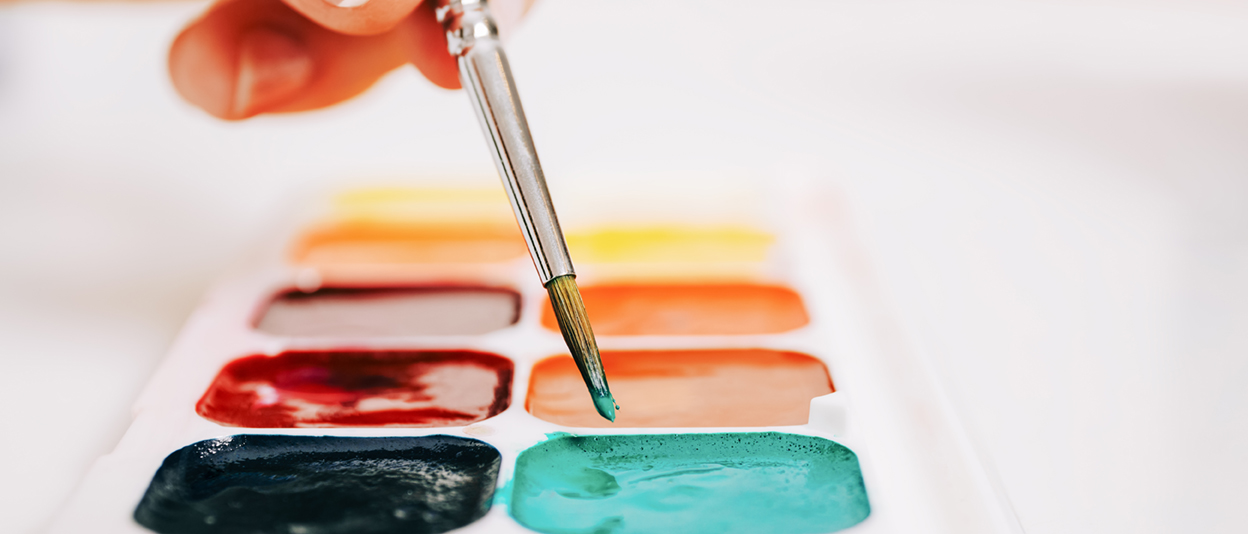 10 Jul 2018
10 Jul 2018
Art – no matter whether you choose to create it yourself or simply observe and enjoy it – is a relaxing and inspiring activity for many people. However, the particular benefits of artistic expression go much further than relaxation and enjoyment. Studies suggest that art therapy can be very valuable in treating issues such as depression, anxiety, post-traumatic stress disorder and even some phobias. It is a great way to express your emotions without words, process complex feelings and find relief. In this article, we will take a closer look at art therapy and discuss its mental health benefits.
What Is Art Therapy?
Art therapy can be defined in many ways, but the simplest way to define it is an application of the visual arts in a therapeutic context. You don’t necessarily have to see a therapist in order to experience some of the therapeutic benefits of artistic expression. There are many simple activities you can try from the comfort of your home such as art journaling, sketching, making collages, sculpting with clay, etc. It doesn’t matter what media you choose. The only thing that matters is that you feel comfortable using it.
However, working with a licensed therapist also has its advantages because a professional can tailor each activity to your own needs. If the activities are done in a group, they are excellent for building healthy connections with other people, which may be very helpful if you are fighting depression. The most important thing is that you should try art therapy only if you want it. Expressing yourself through art can be self-revealing and sometimes equally painful as talking. So, if you still don’t feel ready to try it, that is okay.
Who Should Try Art Therapy?
Anyone who feels overwhelmed or pressured by the hectic world we live in should try art therapy. Creating art will give you a chance to slow down and explore any issues you may be having. Art therapy improves the mental health of people who are dealing with addictions, anxiety, attention disorders, grief and loss, dementia, depression, eating disorders, physical illness, PTSD, trauma, relationship issues and much more.
Since the focus is on the process and not the final product, art therapy is not about becoming a great artist but about finding meaning and connection in your life. All you need for it is a willingness to experiment.
Mental Health Benefits of Art Therapy Activities.
Art therapy can be used as a complement to traditional mental health treatment. The aim is to manage behaviors, process feelings, reduce stress and anxiety, and increase self-esteem.
Self-discovery: Creating art can help you acknowledge and recognize feelings that have been lurking in your subconscious.
Self-esteem: The process will give you a feeling of self-accomplishment which can be very valuable to improve your self-appreciation and confidence.
Emotional release: The greatest benefit of art therapy is giving you a healthy outlet for expressing and letting go all your feelings and fears. Complex emotions such as sadness or anger sometimes cannot be expressed with words. When you are unable to express yourself, but you desire emotional release, making art may help you to do it.
Stress relief: Fighting anxiety, depression or emotional trauma can be very stressful for you both mentally and physically. Creating art can be used to relieve stress and relax your mind and body.
It is very important to know that you don’t have to be a talented artist in order to try art therapy. Human beings are innately creative, and all you need to do to complete an art therapy activity successfully is, to be honest with yourself and your emotions. Once you unleash your creativity, your inner artist will quickly wake up.
Studies also show that creating art stimulates the release of dopamine. This chemical is released when we do something pleasurable, and it basically makes us feel happier. Increased levels of this feel-good neurotransmitter can be very helpful if you are battling anxiety or depression.
Mental health professionals and experts agree that art therapy has many benefits, from boosting your self-esteem, and providing you a safe outlet to relieve your emotions, to giving you a sense of control over your life and helping you to get to know and understand yourself better. During the process of art creation, you will be taking yourself on a journey of self-discovery that will help you eliminate emotional roadblocks, and learn how to communicate with yourself and others.
*Originally published on Resources to Recover
